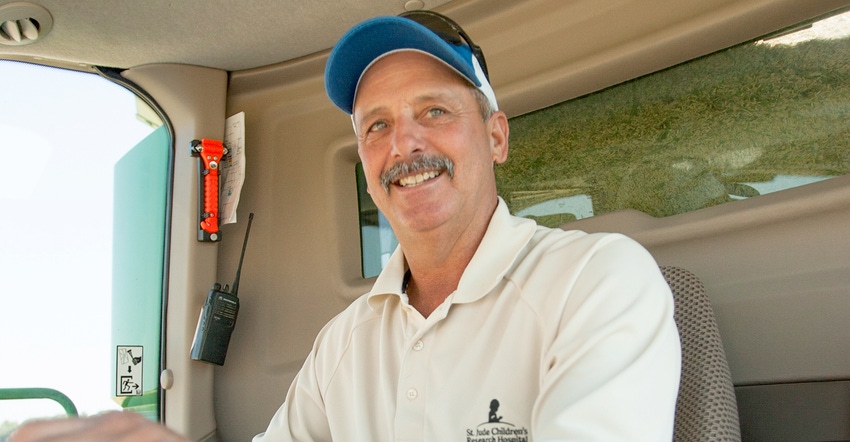
While success isn’t guaranteed for Jonesboro, Ark., grower Mark Wimpy, several key production practices he has developed for his operation over nearly four decades give him a great shot at achieving his yield goals — again.
The main ingredient, he says, is having good land that is suitable for rice production. He farms silt loam with a clay base on the west side of Crowley’s Ridge. “Even though my land is better suited for producing rice than soybeans, I’ve rotated rice and beans for more than 30 years. I haven’t had much success growing continuous rice.”
Additionally, Wimpy notes, rotation eliminates red rice problems and herbicide resistance. “On my seed rice production, I’m two years soybeans and one year rice. Most of my mill rice production is one year in and one year out.”
Another major factor, he says, is variety selection. When he finds a new variety with good agronomics that fit his program, he tries it on a small acreage to see how it performs on his soil and with his practices. He grows a 60/40 spread between medium and long grain varieties.
In 2017, his medium grain varieties were Titan, Clearfield CL272, and Jupiter — a workhorse on his farm. His long grains included Diamond, a conventional variety that was his top long grain last year, yielding in the upper 170s dry. He also grew Clearfield CL153 and CL172, as well as a 2-acre plot of BASF’s Provisia-tolerant rice, which he says looked very good.
Soil fertility is another factor contributing to success, Wimpy says. Since the mid-1990s, he has made variable rate applications of fertilizer and lime, and has used grid soil sampling. “I split my farm three ways, and every field gets sampled every three years. This provides more uniform yields, and a much more efficient harvest — all the plants are at a more uniform moisture when we harvest.”
ON-FARM STORAGE
Adding to his formula for success in his rice operation is on-farm storage, which offers many benefits, he says.
“Having storage on the farm helps me control my harvest operations, including moisture content. I harvest when I want to, and store the crop in the bin at the moisture level I want. I dry it myself, over a longer period of time, using just air, which enhances milling yield. Air drying also improves germination of my seed rice.”
Another benefit of grain storage is that he can harvest more acres, and do it faster than if he trucks his crop to a local elevator. “Also, it reduces my labor, which is hard to come by. We take rice off the combine to the grain cart, then to the grain bin — we only load rice in a semi when we sell it. Storage also enables me to sell when I feel the market is right. We have a total storage capacity of 450,000 bushels in four locations on the farm.”
WATER MANAGEMENT
Water management has become an even larger consideration in rice production, and his area is experiencing a declining water table. When his grandfather dropped his first well in the late 1920s, the depth to water was just 30 feet — today, it averages 85 feet to 90 feet.
“So, we have become even more resourceful with our water,” Wimpy says. “We try to grow rice as efficiently as possible, using the least amount of water. We irrigate more with polypipe, and use a bit more pinpoint irrigation. We also hold a shallower flood than we used to, which means we rely on herbicides more. And we do some intermittent watering, where we wet the soil and let it get almost dry before we wet it again.”
He also relies more on surface water than well water. Several years ago, he increased and enhanced an existing reservoir to make it more efficient. Then he added a tailwater recovery system to go with the reservoir so he can continuously reuse the water.
“Our goal is to use as much surface water as possible,” he says, “and the least amount of well water. The reservoir catches a lot of runoff from the ridge; the ditch that feeds my reservoir starts on the slopes of Crowley’s Ridge. Runoff water from Jonesboro funnels down to my farm, and I use it during the off-season to refill my reservoir.”
Wimpy began farming rice on his own in 1980, the infamous summer that saw continuous days of triple digit temperatures, when well pumps seemed to never shut down. That daunting season established a solid baseline for the young grower.
“When things are tough now, I often think back to my first season,” he says. “At that time, I wondered several times if I had made the right decision to farm — 39 years later, I know I did.”
About the Author(s)
You May Also Like




